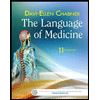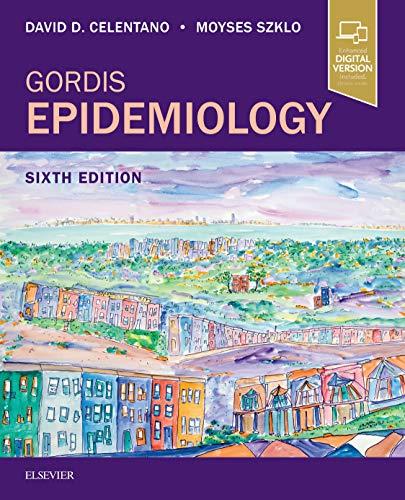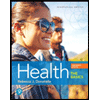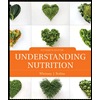
EBK GOULD'S PATHOPHYSIOLOGY FOR THE HEA
5th Edition
ISBN: 9780100026964
Author: HUBERT
Publisher: YUZU
expand_more
expand_more
format_list_bulleted
Concept explainers
Question
Chapter 8, Problem 1LO
Summary Introduction
To describe: The common skin lesions.
Concept introduction: The skin is the outer protective covering of the body. It is the largest organ of the body. The skin and its accessory components such as hair, nails, and glands make up the integumentary system of the body. A lesion is an area of abnormal growth or appearance found anywhere on or in the body. It may be caused by the systematic disorder and localized factors such as exposure to the toxins.
Expert Solution & Answer
Explanation of Solution
The common types of lesions are given as below:
- 1. Macule: Macule is a small, flat circumscribed area that is different in the color than the normal color. It is less than 1cm in diameter. For example, freckles, petechiae, measles, flat moles, and scarlet fever.
- 2. Nodule: Nodule is an elevated, palpable, firm circumscribed lesion. It is 1 to 2 cm in diameter. For example, lipomas, and erythema nodosum.
- 3. Papule: Papule is an elevated small, firm, circumscribed lesion. It is less than 1cm in diameter. For example, wart, elevated moles, fibroma, lichen planus, and insect bite.
- 4. Pustule: A pustule is an elevated, erythematosus lesion. It is less than 1cm in diameter. For example, impetigo, and acne.
- 5. Vesicle: Vesicle is an elevated, circumscribed, superficial, thin-walled lesion. It is filled with serous fluid. It is less than 1cm in diameter. For example, chickenpox, shingles, and herpes simpler.
- 6. Plaque: Plaque is a large, slightly elevated, and rough lesion with the flat top surface. It is greater than 1cm in diameter.
- 7. Ulcer: Ulcer is a cavity with a loss of epidermis and dermis. It is concave in shape and varies in size. For example, pressure ulcer, and stasis ulcer.
- 8. Fissure: Fissure is a small, deep linear break, or crack from the epidermis to dermis in the skin. It may be moist or dry. For example, athlete’s foot, anal fissure, cracks at the corner, and dermatitis.
Want to see more full solutions like this?
Subscribe now to access step-by-step solutions to millions of textbook problems written by subject matter experts!
Chapter 8 Solutions
EBK GOULD'S PATHOPHYSIOLOGY FOR THE HEA
Ch. 8 - Prob. 1LOCh. 8 - Prob. 2LOCh. 8 - Prob. 3LOCh. 8 - Prob. 4LOCh. 8 - Prob. 5LOCh. 8 - Prob. 6LOCh. 8 - Prob. 7LOCh. 8 - Prob. 8LOCh. 8 - Prob. 9LOCh. 8 - Prob. 10LO
Ch. 8 - Prob. 8.1AYKCh. 8 - Prob. 8.1ATACh. 8 - Prob. 8.1BTACh. 8 - Prob. 8.1CTACh. 8 - Prob. 8.1DTACh. 8 - Prob. 8.2ATACh. 8 - Prob. 8.2BTACh. 8 - Prob. 8.2CTACh. 8 - Prob. 8.2DTACh. 8 - Prob. 8.3ATACh. 8 - Prob. 8.3BTACh. 8 - Prob. 8.3CTACh. 8 - Prob. 8.3DTACh. 8 - Prob. 8.3ETACh. 8 - Prob. 8.4ATACh. 8 - Prob. 8.4BTACh. 8 - Prob. 8.4CTACh. 8 - Prob. 8.4DTACh. 8 - Prob. 8.5ATACh. 8 - Prob. 8.5BTACh. 8 - Prob. 8.5CTACh. 8 - Prob. 8.5DTACh. 8 - Prob. 8.5ETACh. 8 - Prob. 1CSACh. 8 - Prob. 2CSACh. 8 - Prob. 3CSACh. 8 - Prob. 4CSACh. 8 - Prob. 5CSACh. 8 - Prob. 1CSBCh. 8 - Prob. 2CSBCh. 8 - Prob. 3CSBCh. 8 - Prob. 1SQCh. 8 - Prob. 2SQCh. 8 - Prob. 3SQCh. 8 - Prob. 4SQCh. 8 - Prob. 5SQCh. 8 - Prob. 6SQCh. 8 - Prob. 7SQCh. 8 - Prob. 8SQCh. 8 - Prob. 9SQCh. 8 - Prob. 10SQCh. 8 - Prob. 11SQCh. 8 - Prob. 12SQCh. 8 - Prob. 13SQCh. 8 - Prob. 14SQ
Knowledge Booster
Learn more about
Need a deep-dive on the concept behind this application? Look no further. Learn more about this topic, health-nutrition and related others by exploring similar questions and additional content below.Recommended textbooks for you
 The Language of Medicine, 11eHealth & NutritionISBN:9780323370813Author:Davi-Ellen Chabner BA MATPublisher:Saunders
The Language of Medicine, 11eHealth & NutritionISBN:9780323370813Author:Davi-Ellen Chabner BA MATPublisher:Saunders Gordis EpidemiologyHealth & NutritionISBN:9780323552295Author:David D. Celentano, Moyses SzkloPublisher:ELSEVIER
Gordis EpidemiologyHealth & NutritionISBN:9780323552295Author:David D. Celentano, Moyses SzkloPublisher:ELSEVIER Nutrition Through The Life CycleHealth & NutritionISBN:9781337919333Author:Brown, Judith E.Publisher:Cengage Learning,
Nutrition Through The Life CycleHealth & NutritionISBN:9781337919333Author:Brown, Judith E.Publisher:Cengage Learning, Health: The Basics (13th Edition)Health & NutritionISBN:9780134709680Author:Rebecca J. DonatellePublisher:PEARSON
Health: The Basics (13th Edition)Health & NutritionISBN:9780134709680Author:Rebecca J. DonatellePublisher:PEARSON Understanding Nutrition (MindTap Course List)Health & NutritionISBN:9781337392693Author:Eleanor Noss Whitney, Sharon Rady RolfesPublisher:Cengage Learning
Understanding Nutrition (MindTap Course List)Health & NutritionISBN:9781337392693Author:Eleanor Noss Whitney, Sharon Rady RolfesPublisher:Cengage Learning Introduction To Health PhysicsHealth & NutritionISBN:9780071835275Author:Johnson, Thomas E. (thomas Edward), Cember, Herman.Publisher:Mcgraw-hill Education,
Introduction To Health PhysicsHealth & NutritionISBN:9780071835275Author:Johnson, Thomas E. (thomas Edward), Cember, Herman.Publisher:Mcgraw-hill Education,

The Language of Medicine, 11e
Health & Nutrition
ISBN:9780323370813
Author:Davi-Ellen Chabner BA MAT
Publisher:Saunders

Gordis Epidemiology
Health & Nutrition
ISBN:9780323552295
Author:David D. Celentano, Moyses Szklo
Publisher:ELSEVIER

Nutrition Through The Life Cycle
Health & Nutrition
ISBN:9781337919333
Author:Brown, Judith E.
Publisher:Cengage Learning,

Health: The Basics (13th Edition)
Health & Nutrition
ISBN:9780134709680
Author:Rebecca J. Donatelle
Publisher:PEARSON

Understanding Nutrition (MindTap Course List)
Health & Nutrition
ISBN:9781337392693
Author:Eleanor Noss Whitney, Sharon Rady Rolfes
Publisher:Cengage Learning

Introduction To Health Physics
Health & Nutrition
ISBN:9780071835275
Author:Johnson, Thomas E. (thomas Edward), Cember, Herman.
Publisher:Mcgraw-hill Education,